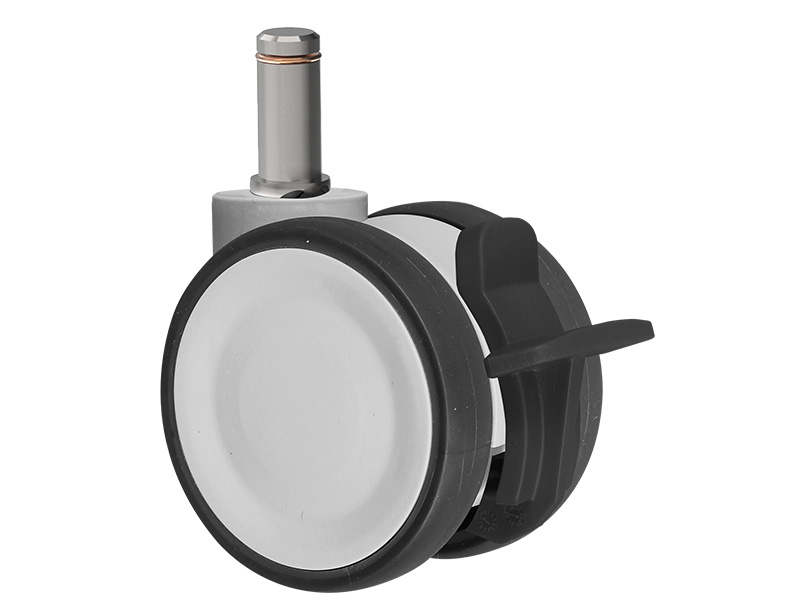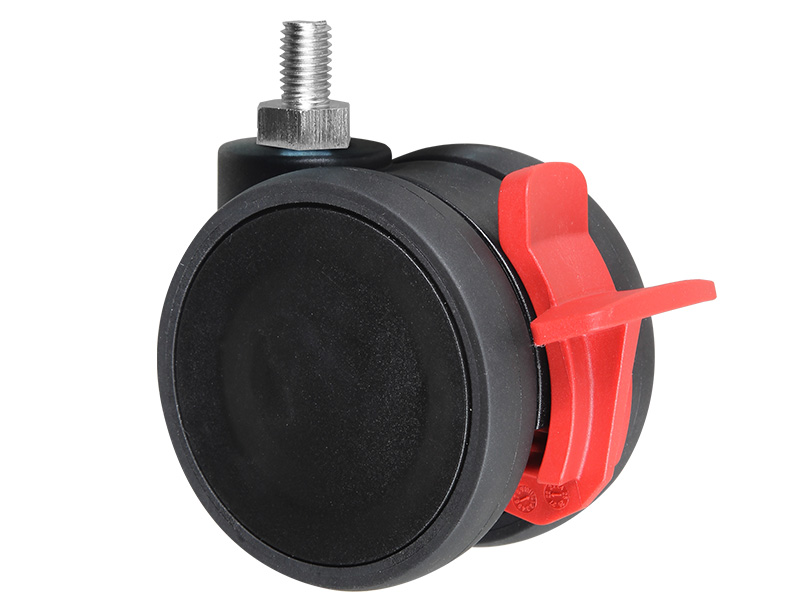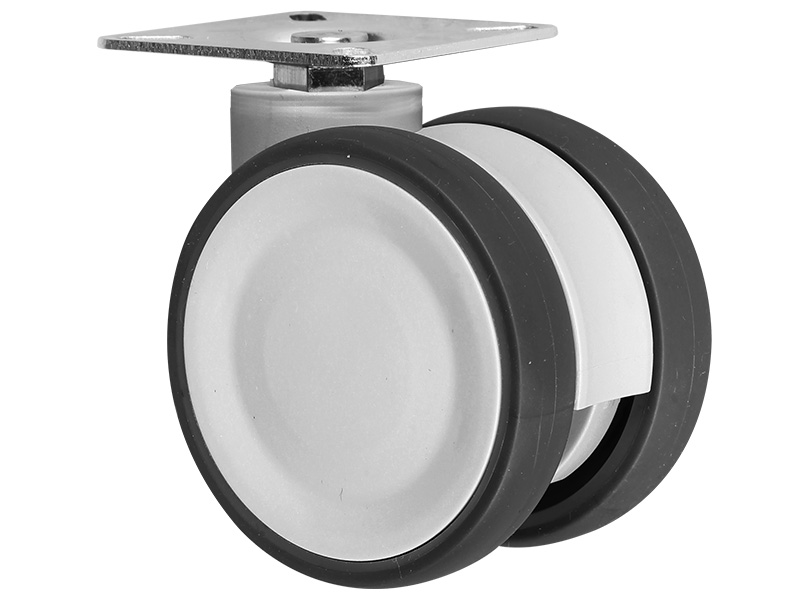In today’s dynamic world, where mobility is key, the significance of reliable casters cannot be overstated. Nylon twin wheel casters have emerged as a cornerstone in various industries, offering unparalleled maneuverability and durability. In this comprehensive guide, we delve into the realm of nylon twin wheel casters, exploring their types, applications, benefits, and much more.
Types and Categories
Nylon twin wheel casters come in various types and categories, each designed to cater to specific needs and environments.
Standard Twin Wheel Casters: These are the most common type, featuring two wheels mounted on a swivel base. They offer excellent maneuverability and are suitable for light to medium-duty applications.
Heavy-Duty Twin Wheel Casters: Designed to withstand higher loads and rougher terrains, heavy-duty twin wheel casters are reinforced with durable materials, making them ideal for industrial settings.
Locking Twin Wheel Casters: Equipped with locking mechanisms, these casters provide stability and security when stationary, preventing unwanted movement.
Swivel Twin Wheel Casters: With a 360-degree swivel action, these casters offer maximum flexibility and ease of movement in any direction.
Symptoms and Signs
Identifying the need for nylon twin wheel casters involves recognizing certain symptoms and signs within your workplace or environment.
Difficulty in Maneuvering: If you’re struggling to move equipment or furniture smoothly, it may indicate worn-out or inadequate casters.
Increased Friction and Noise: Excessive friction or squeaking noises during movement suggest that the casters are not functioning optimally and may require replacement.
Uneven Wear Patterns: Inspecting the wheels for uneven wear patterns can indicate issues with alignment or load distribution, prompting the need for suitable casters.
Causes and Risk Factors
Understanding the factors contributing to caster wear and tear is crucial for selecting the right type of nylon twin wheel casters.
Heavy Loads: Exceeding the weight capacity of casters puts undue stress on the wheels, leading to premature deterioration.
Abrasive Surfaces: Frequent movement over rough or abrasive surfaces accelerates wear and reduces the lifespan of casters.
Improper Maintenance: Neglecting regular maintenance, such as lubrication and cleaning, can contribute to caster failure and decreased performance.
Diagnosis and Tests
Diagnosing caster-related issues involves a thorough assessment of the equipment and its operating environment.
Visual Inspection: Inspecting the condition of the wheels, bearings, and mounting hardware can reveal visible signs of damage or wear.
Load Capacity Analysis: Determining the weight capacity requirements based on the intended application helps in selecting the appropriate casters.
Mobility Testing: Conducting mobility tests to assess the smoothness of movement and the presence of any irregularities or obstructions.
Treatment Options
Addressing caster-related issues often involves selecting the right treatment options to restore functionality and efficiency.
Caster Replacement: Replacing worn-out or damaged casters with high-quality nylon twin wheel casters ensures optimal performance and longevity.
Lubrication and Maintenance: Regular lubrication and maintenance help prevent premature wear and extend the lifespan of casters, enhancing overall efficiency.
Upgrading to Heavy-duty Casters: For applications involving heavy loads or rugged terrains, upgrading to heavy-duty nylon twin wheel casters provides greater durability and reliability.
Preventive Measures
Implementing preventive measures is essential for minimizing caster-related issues and maximizing productivity.
Regular Inspections: Conducting routine inspections to identify signs of wear or damage allows for timely intervention and replacement of casters as needed.
Proper Load Distribution: Ensuring proper distribution of weight on equipment or furniture prevents overloading of casters and minimizes strain on wheels.
Surface Maintenance: Maintaining clean and smooth surfaces reduces friction and extends the lifespan of casters, enhancing overall performance.
Conclusion
Nylon twin wheel casters play a vital role in enhancing mobility and performance across a wide range of industries and applications. By understanding the types, symptoms, causes, and treatment options associated with caster-related issues, businesses can make informed decisions to optimize efficiency and productivity.







